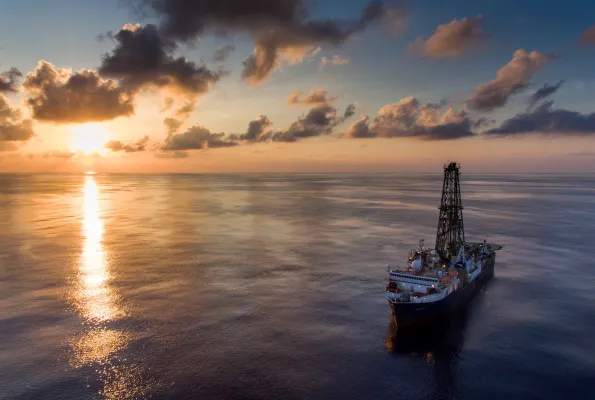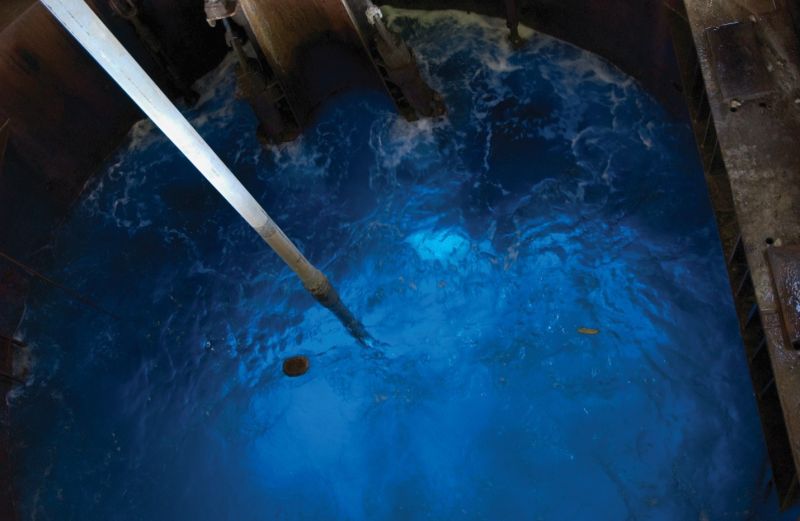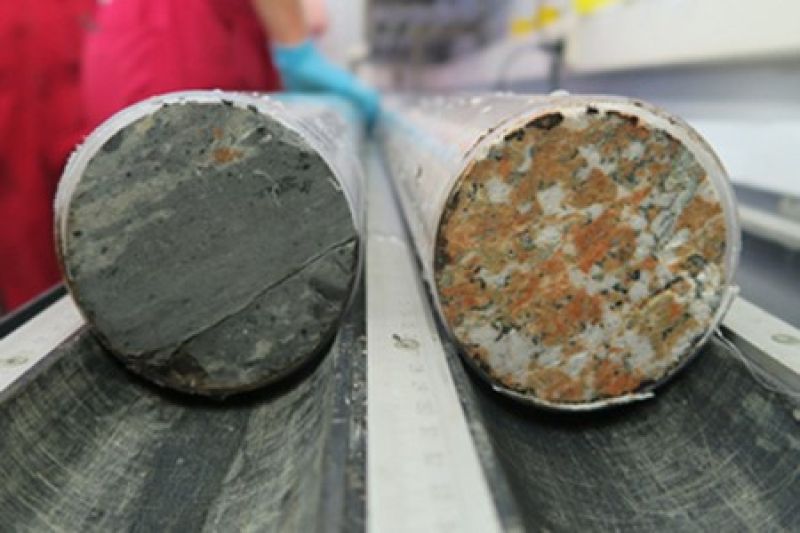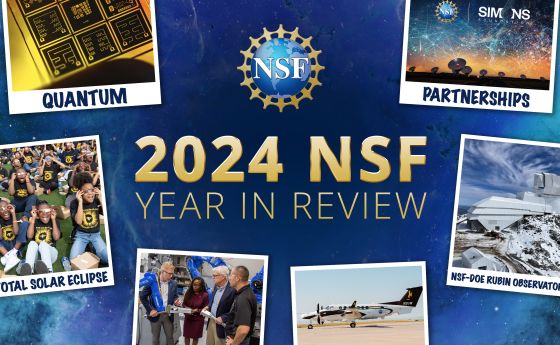
A moment that changed Earth
Chicxulub crater research explores how an asteroid impact led to a global catastrophe and the extinction of the dinosaurs
In a warm, humid forest clearing, the Tyrannosaurus rex was calmly chewing on the carcass of a duck-billed dinosaur, when a small white light appeared in the sky. The light grew larger and larger, until it became blinding; the dinosaur never finished its lunch.
Approximately 66 million years ago, an asteroid nearly 10 kilometers (6.2 miles) across hit the Earth near what is now the Yucatan Peninsula, close to the current towns of Chicxulub Pueblo and Chicxulub Puerto (after which the resulting crater is named). The asteroid hit at an estimated speed of 20 kilometers per second (more than 58 times the speed of sound) at a relatively steep angle of between 45 and 60 degrees to the Earth’s surface. The impact produced as much explosive energy as 100 teratons of TNT, 4.5 billion times the explosive power of the Hiroshima atomic bomb. It was the beginning of the end.
What followed was irreversible climate change, species decline and extinction. In short, it wasn't the asteroid that killed the dinosaurs. It was climate change. Understanding why and how is critical for humans to navigate today's changing climate.
We're finding answers in the ocean. With the JOIDES Resolution (a giant drilling ship), a lift boat called Myrtle, and through the International Ocean Discovery Project, U.S. National Science Foundation-funded scientists have discovered an immense amount of information about the asteroid's impact and the immediate aftermath.
Superheated winds moving over 1,000 kph (620 mph) would have radiated 900 to 1,800 km out from the asteroid impact point, shredding vegetation and killing animals. Initially, the impact blasted a cavity 100 km (62 miles) wide and 30 km (19 miles) deep. The impact was accompanied by a massive plume of 25 trillion metric tons of molten material shooting up into the atmosphere, with the temperature of some of this molten material being several times hotter than the surface of the sun.
This plume would have passed right through the atmosphere, firing some material out into space. However, the remainder would have rained down over North America, incinerating everything within a radius of more than 1,000 miles and causing wildfires in 70% of the world’s forests.
If superheated winds and a rain of molten rock from the skies were not enough, a 1.5 km high tsunami immediately followed the impact, with subsequent tsunamis 50 to 150 meters high created by ensuing earthquakes, transporting sediments and debris to what is now Florida and Texas. The impact and tsunamis transported 48,000 cubic miles of sediment across the Gulf of Mexico, covering swathes of Mexico and the Caribbean in hundreds of feet of debris. In addition to spawning massive earthquakes at the impact site (of a magnitude between 9 and 11), the shockwave from the asteroid triggered earthquakes and volcanic activity around the world.
Because of where the asteroid hit the Earth, much of the material that was in the impact plume was the sedimentary mineral gypsum – which is high in sulfur – as well as water vapor. The dust and sulfurous materials ejected into the atmosphere would have led to a nuclear winter-like effect, with a rapid decrease in global temperatures (as sulfate aerosols have a cooling effect in the upper atmosphere) and acid rain (with the sulfates and water vapor combining to form sulfuric acid). Dust particles in the atmosphere may also have cut the amount of sunlight penetrating the atmosphere, both reducing photosynthesis and adding to the nuclear winter effect.
Over the long term, however, vaporized carbonate rock entering the atmosphere, in addition to the global wildfires, may have increased atmospheric carbon dioxide levels, leading to a post-impact warming due to the greenhouse effect. Temperatures eventually peaked in this post-impact greenhouse world about 55 million years ago – a period when the polar ice caps had melted, and much of the world was covered in shallow seas.
In the aftermath of the impact there was a global mass extinction, with roughly 70% of species dying off, including the majority of the dinosaur species, although some of the smaller dinosaurs evolved into birds. However, it was the massive changes in climate after the impact, rather that the asteroid impact itself, that likely caused the mass extinction.
Exploring the crater today
The crater today is covered by hundreds of feet of sediment, but where it once was, you'll now find NSF-funded researchers exploring the site of the asteroid impact in the Liftboat Myrtle. This is a flat-bottomed vessel that can float out to a drilling site and ratchet down a set of three stilt-like legs, transforming from a boat to a drilling platform similar to a small oil rig.
Together with the JOIDES Resolution drilling ship, these vessels drilled into the seabed sediment and through the layers of materials ejected by the asteroid, in order to extract sediment and rock core samples that could be analyzed to get a geological timeline of how the surface of the world changed after the impact.
The scientists found layers of molten rock; granite from deep in the Earth's crust (which was pulled to the surface after the asteroid had punched deep into the Earth); and even layers of carbon from the firestorm that burn millions of acres of vegetation after the impact -- which was then dragged out to sea by the post-impact tsunamis.
“An opportunity to work on a project like the Chicxulub impact crater is a once in a lifetime experience” said Catherine Ross, who conducted research on the crater for her doctorate with The University of Texas at Austin. “When the crater hit the Yucatan Peninsula, it vaporized/ejected the target rocks and scattered bits of the Yucatan around the world. I have been studying these deposits of ejected material in the Gulf of Mexico region. I hope studying these deposits will help us figure out the timing of the different processes related to the impact. The impact ejected material from the crater but it also created earthquakes, tsunamis and wildfires.”
In addition to finding out more about the asteroid’s impact and the events that lead to the extinction of the dinosaurs, researching the crater may help scientists discover how life begins.
“Impact craters generally are a keystone to understanding early Earth's history, and particularly how impact craters provide potential "cradles of life" and influenced the habitability of Earth's earliest critters,” said Ross. “Perhaps most importantly, at least in my eyes, is the fact that impact craters are a ubiquitous planetary process and the novel research being done on this planet provides clues for what happens on other planets. This is becoming more important as we start sample return missions from the Moon and Mars.”





